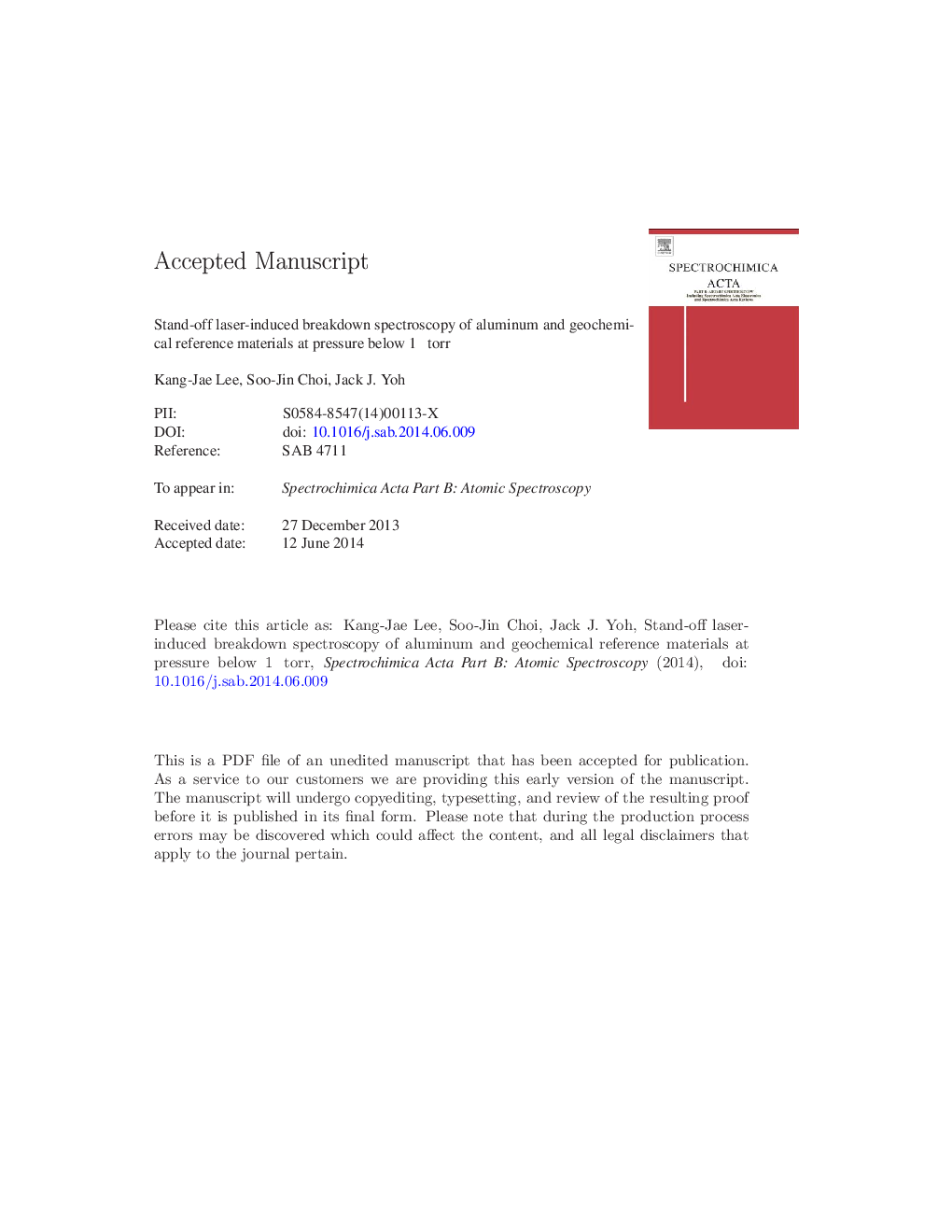| Article ID | Journal | Published Year | Pages | File Type |
|---|---|---|---|---|
| 7674573 | Spectrochimica Acta Part B: Atomic Spectroscopy | 2014 | 20 Pages |
Abstract
Laser-induced breakdown spectroscopy (LIBS) is an atomic emission spectroscopy that utilizes a highly irradiated pulse laser focused on the target surface to produce plasma. We obtain spectroscopic information from the microplasma and determine the chemical composition of the sample based on its elemental and molecular emission peaks. We develop a stand-off LIBS system to analyze the effect of the remote sensing of aluminum and various geochemical reference materials at pressures below 1Â torr. Using a commercial 4 inch refracting telescope, our stand-off LIBS system is configured at a distance of 7.2Â m from the four United States Geological Survey (USGS) geochemical samples that include granodiorite, quartz latite, shale-cody, and diabase, which are selected for planetary exploration. Prepared samples were mixed with a paraffin binder containing only hydrogen and carbon, and were pelletized for experimental convenience. The aluminum plate sample is considered as a reference prior to using the geochemical samples in order to understand the influence of a low pressure condition on the resulting LIBS signal. A Q-switched Nd:YAG laser operating at 1064Â nm and pulsed at 10Â Hz with 21.7 to 48.5Â mJ/pulse was used to obtain signals, which showed that the geochemical samples were successfully detected by the present stand-off detection scheme. A low pressure condition generally results in a decrease of the signal intensity, while the signal to noise ratio can vary according to the samples and elements of various types. We successfully identified the signals at below 1Â torr with stand-off detection by a tightly focused light detection and by using a relatively larger aperture telescope. The stand-off LIBS detection at low pressure is promising for potential detection of the minor elements at pressures below 1Â torr.
Related Topics
Physical Sciences and Engineering
Chemistry
Analytical Chemistry
Authors
Kang-Jae Lee, Soo-Jin Choi, Jack J. Yoh,
